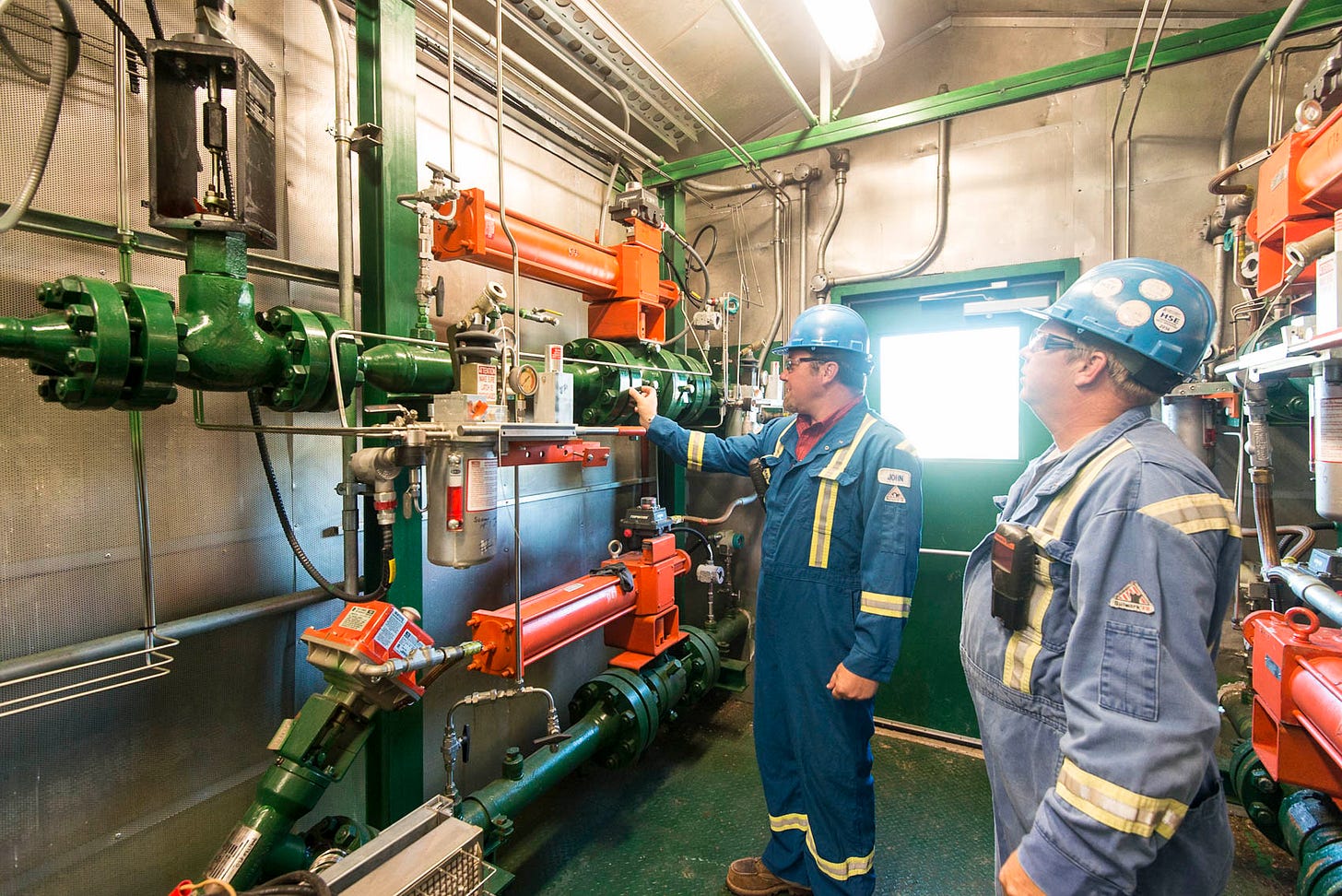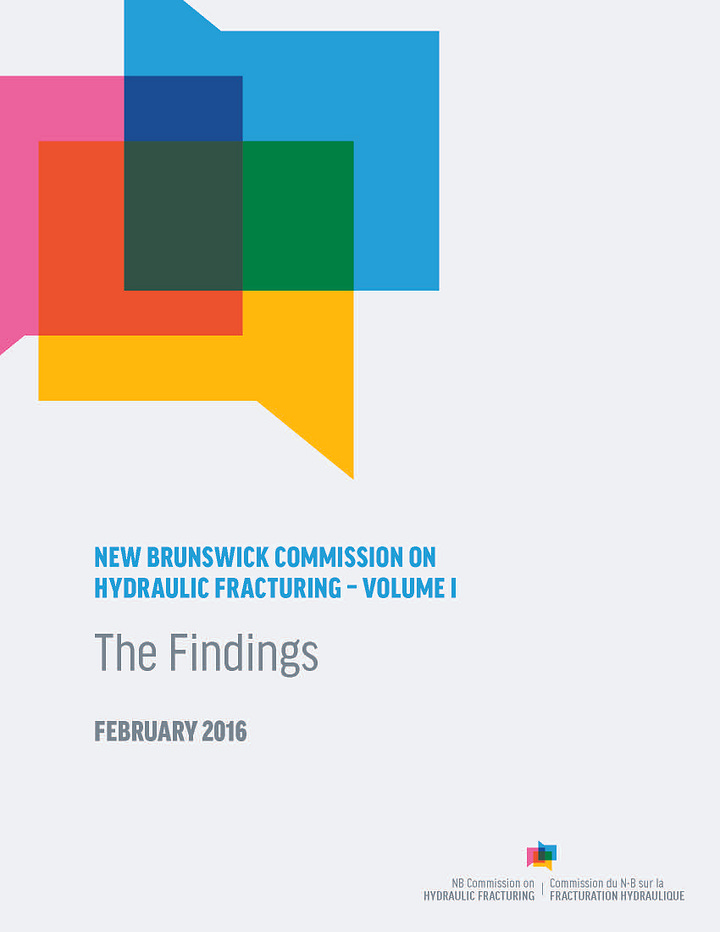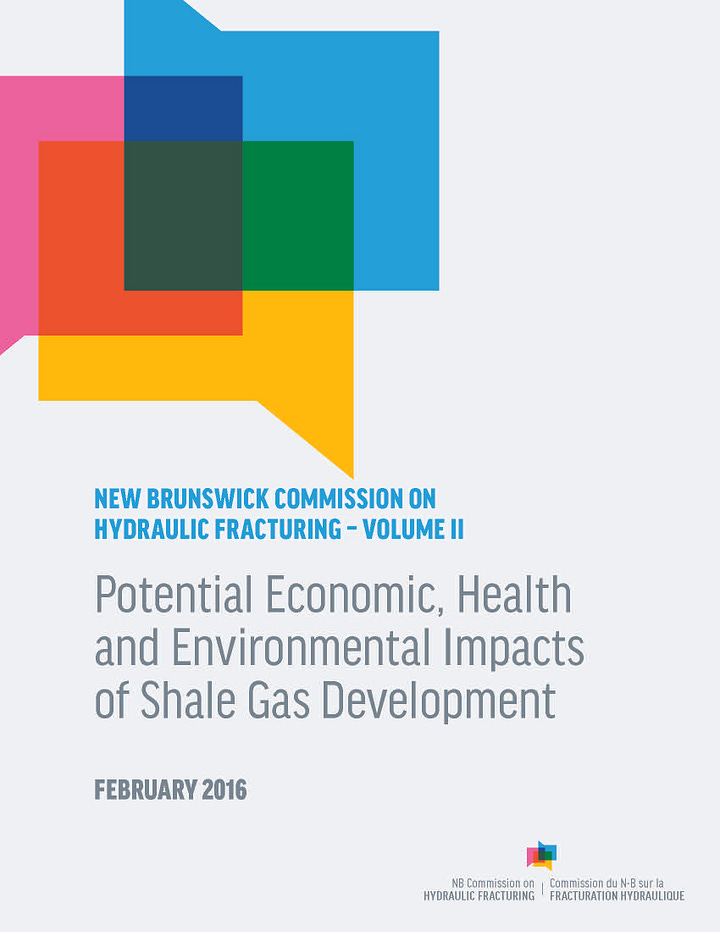Community Wealth and Health Should Be the Focus for Regulatory Approval of New Development Projects
That's the answer when local residents ask why they should take on environmental risk and community disruptions caused by increased traffic and other annoyances when industry comes to town

Hello everyone! I hope you enjoyed a lovely Canada Day break. Gina and I have definitely transitioned into our summer rhythm, which includes losing Gina to the wonders of the Bay of Fundy. In addition to being a fabulous journalist, Gina owns and operates Kayak Fundy/Fresh Air Adventures in Alma, New Brunswick and she’s busy running guided ocean and river kayaking tours. If you’re looking for a perfect way to enjoy a New Brunswick summer day, book yourself a tour with Gina and her guides. There’s nothing quite like being out in a kayak, paddling past the cliffs and caves carved out by the mighty Bay of Fundy tides – the highest in the world!
Meanwhile, I’m back in my childhood home in Mississauga for a few weeks, helping out my amazing nonagenarian parents continue to live independently. Now that I’m settled in my ‘summer office’ in my childhood basement, surrounded by all my baby and graduation photos, and the ghost of my Barbie Ski Hill, I hope to get back to a twice-weekly publishing schedule next week.
Today, I continue excerpts from the February 2016 final report of the New Brunswick Commission on Hydraulic Fracturing, led by citizen commissioners Cheryl Robertson, John D. McLaughlin and Marc Léger, which I had the pleasure of working on as their scribe and editor.
The following, edited for brevity, presents observations and recommendations related to economic strategy, an integrated risk management model, and a single, independent regulator. Because this is a public report, I am publishing it without a paywall.
Excerpts From The Commission on Hydraulic Fracturing, Volumes I and 2


New Brunswick needs to generate more wealth. That’s the bottom line – not just for the Government but also for everyone who lives and works in this province.
To do this, the private sector must accelerate its transition to a value-added resources and knowledge-based economy. Value-added industries rely primarily on technology, productivity and skilled labour to create products and services, often from natural resources, that are sold at premium prices.
This stands in contrast to traditional commodity-based economies, which are more susceptible to market fluctuations, as the past year of dropping oil and natural gas prices and stock market values has illustrated.
New Brunswick needs to be part of this larger story. Energy can play a key role in getting us there, but only if we change how we think about it.
New Brunswickers need to regard energy investments as part of the larger advanced technology story rather than simply as a commodity as we have done in the past.
This will stimulate greater investment in energy technologies, particularly those that can help us transition to a more affordable, cleaner energy future.
Energy Should Be Part of Our Advanced Technology Story
New Brunswick has been slow in making the transition to clean energy, partially because of the way we regard energy as a commodity rather than as a series of advanced technologies and services operating within a larger system.
Natural gas, oil and uranium are commodities and extracting these commodities has traditionally supported national and provincial economies, such as coal once did in New Brunswick.
However, the world is shifting towards integrated energy systems that will be supported by a variety of advanced technologies, most of which will not require fossil fuels.
The Council of Canadian Academies’ 2015 report Technology and Policy Options for a Low-Emission Energy System in Canada examined the following commercial and pre-commercial technologies for Canadian electricity generation.
Biomass
Geothermal
Hydropower
Nuclear
Solar
Wind onshore and offshore
Carbon capture for natural gas-fired or coal-fired energy generation
Tidal
As Canada and New Brunswick increase the use of renewable energy, much of which produces energy intermittently, the following energy storage technologies could be of value.
Compressed air systems
Battery systems
Hydrogen fuel cells
Flywheels
Electrochemical capacitors
Low-emission fuel choices for transportation
Biofuels
Electricity
Hydrogen
Towards An Integrated Risk Management Model
Determining the extent of potential risks resource development poses to New Brunswick communities will depend on the answers to a number of questions.
What will be the density of developments, which could be clustered in specific areas or spread out?
What will be the pace of development?
What will be the location of development sites in relation to water supplies and waste treatment facilities, and the extent to which water pipelines, waterless hydraulic fracturing technologies and onsite recycling systems are employed, all of which will impact the risk level to water resources as well as traffic patterns?
What will be the impacts of potential increases to individual communities’ populations and the resultant economic spinoffs that could bring?
No one in New Brunswick has the answer to the above questions because no one knows the size or commercial viability of the province’s natural resources.
However, understanding what we need to know enables the Government to design an integrated risk management process that is tailored to our province’s specific needs.
Side Walks is fully funded by readers and organizations that support our mission to produce local journalism. If you’re enjoying this story, please consider becoming a paid subscriber, $8/month or $80/year. You can also sign up for a free subscription. All subscriptions deliver Side Walks directly to your email inbox, and you can also read along on the Substack app.
Think of us as your friendly neighbourhood buskers setting fire to complacency while juggling a mix of coverage, commentary and culture – and this is the point in the show where we pass the hat. We appreciate your support!
Now back to the story…
In its 2014 report, the Council of Canadian Academies recommended a comprehensive risk management framework focused on five elements that could provide the Government with a good starting point.
Technologies to develop and produce shale gas or other forms of resource extraction. Equipment and products must be adequately designed, installed in compliance with specifications, and tested and maintained for reliability.
Management systems to control the risks to the environment and public health. The safety management of equipment and processes associated with the development and operation of sites must be comprehensive and rigorous.
An effective regulatory system. Rules to govern the development of shale gas or other resource extraction must be based on appropriate science-driven, outcome-based regulations with strong performance monitoring, inspection and enforcement.
Regional planning. To address cumulative impacts, drilling and development plans must reflect local and regional environmental conditions, including existing land uses and environmental risks. Some areas may not be suitable for development with current technology, whereas others may require specific management measures.
Engagement of local citizens and stakeholders. Public engagement is necessary not only to inform local residents of development, but to receive their input on what values need to be protected, to reflect their concerns and to earn their trust. Environmental data should be transparent and available to all stakeholders.
A Single Independent Regulator
This is a framework that points towards the management of regulatory processes under one entity. This should be an evolutionary process designed to improve efficiencies and ensure the concept of sustainable community development is reflected in regulatory decisions. The Government’s current regulatory process has created silos of information and authority. This has frustrated industry applicants, Indigenous people and members of the public who want to participate in the process.
A single regulator could eliminate the duplication and inefficiencies within the current regulatory system by leading ongoing, community-focused consultations rather than project-specific assessments.
It would also eliminate a common problem associated with the resource development sector across Canada: single departments act as both promoter and regulator.
This potential for internal departmental conflict is evident in the Department of Energy and Mines, which is responsible for both the development of the province’s oil and gas sector and its licensing.
Both the Council of Canadian Academies and the Alberta government’s 2011 Regulatory Enhancement Task Force report, which led to the creation of a single regulator, cited this as an issue that undercuts the public’s trust in government.
Reports from New Brunswick’s Auditor General, Ombudsman and Chief Medical Officer of Health, among others, have all noted this disconnect in the New Brunswick context.
An independent regulatory process could help build New Brunswick residents’ trust in Government, a necessary step as we chart our new energy and environmental future.
Finding #4: An environment and energy strategy needs to be developed that helps transition to a new, value-added knowledge-based economy.
The independent regulator’s mandate must be born of strong public policy, specifically a new environment and energy strategy that:
is driven by a clear vision that New Brunswick businesses must develop wealth in this province through the adoption of new technologies and processes and an increase in our production of value-added goods and services;
reflects New Brunswick’s role in meeting Canada’s commitment to limit our country’s overall carbon emissions and transition to a carbon neutral society;
accelerates New Brunswick’s adoption of low and/or no-carbon energy technologies via private sector investment and community-sponsored projects;
outlines what will be required to mitigate the impacts of climate change-related effects, such as extreme weather, on New Brunswick’s watersheds, coasts and land base; and,
clarifies the role natural gas and other fossil fuels will play in New Brunswick’s energy mix over the next 10-20 years as New Brunswick transitions to a carbon-neutral society.
If you enjoyed this column, please share the love with others who you think would enjoy the conversation we’re having on Side Walks. We’re a Canadian media start-up building a community of fellow Canucks (and the people who love us) interested in finding common ground around complex issues by focusing on local repercussions and opportunities caused by national and global issues. We’re based in New Brunswick, on Canada’s East Coast. Cheers
Stroll Over to Side Walks For More Stories
A Better Approach to Resource Development: Almost a decade ago, the New Brunswick Commission on Hydraulic Fracturing made history by becoming the first in North America to successfully bridge divides; their work offers a model to follow today
New Brunswick Leads the Way on Groundwater Protection: As communities raise alarms over local threats, the province has a chance to double down on its leadership in water protection — and turn public concern into a model of environmental sovereignty.
New TV series Revival comes alive in New Brunswick's deep, dark woods: The rural noir supernatural mystery pays homage to its graphic novel roots with a mix of humour, heart and horror that plays out on the back roads of Kings County.
We Are River People: The East Coast may be known for its coastline, but here in New Brunswick, our mighty river systems play an equal part in defining and shaping our lives and culture.
Tiptoeing Through The Rezoning: Saint John's piecemeal approach to industrial development is a weird way to build a provincial economy
Side Walks Home Page
Catch up on all our stories.


